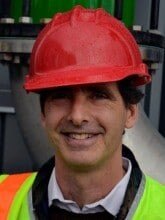A Loss of Knowledge
Strategies for replacing retiring FM workers

It is no secret that organizations are facing a labor shortage across the facility management industry, caused in part by workers accepting early retirement incentives while COVID-19 has made some people re-evaluate their life goals.
In the FM industry, retirement and attrition have a massive impact on the preservation of institutional knowledge, gained through years of working at one or more campuses in multiple industry sectors, including health care, education, public agencies, manufacturing and others.
Getting to know a campus well can take years of on-the-job training.
Many FM teams will say goodbye to retiring key field technicians in the next five years, according to an ARC Facilities LinkedIn poll conducted by David Trask, national director, ARC Facilities.
Training is a lengthy and time-consuming process. Typically, new hires spend hours shadowing more experienced team members, getting to know a facility’s history, meeting building residents, learning the current state of affairs and daily to-do list – absorbing as much institutional knowledge and experience as possible.
FM is not the type of job someone can step into on day one and is immediately up to speed. Every day is different. FMs interact with different types of people, their communications skills are always used and tested, they get to know buildings inside while using some of the most advanced technologies developed in the built environment.
“Facilities teams are the lifeblood of any organization. If the building isn’t functioning properly, the organization is out of business,” said Trask. “That is why it is so important to start capturing that knowledge before it walks out that door.”
While some have posed the idea of bringing in past workers in consulting roles to achieve a work-life balance for those who are not 100 percent ready for retirement, that proposition is more of a Band-Aid than a solution to a problem.
Retired facility team members do not want to be called weekly or while enjoying life with questions about shutoff locations or issues with an old air-handling unit that should have been decommissioned years ago.
Many believe the FM industry has an image problem. Consider IT against FM. Which sounds sexier to a college graduate? While some may opt for IT, the FM industry has changed over the years with highly sophisticated technology in place, including system monitoring and temperature monitoring systems for refrigeration, so finding people with an electronics background is valuable.
Fortunately, FM professionals are developing strategies and tactics to replace and rejuvenate retiring workers.
St. Luke's Medical Center in Wisconsin, USA, created its own internship/apprenticeship program with the support and cooperation of a local trade school and engineering association.
“If you wait for students to graduate from trade schools, then it’s too late,” said Cory Majszak, director of operations, facilities at St. Luke’s. “It’s tough to build a talent pool, so we decided to grow our own.”
Instructors are veteran employees, and initially feared they were being replaced, but their attitudes changed once they realized that their legacy is teaching people, said Majszak. “We need talent and tribal knowledge,” he said. “Students need a safe place to feel supported, empowered and ready to grow. We’re keeping our tribal knowledge intact and we’re helping create the next generation of facility professionals.”
Other organizations and FM leaders are recruiting from the military for trained technicians.
“Our new director of organizational resilience and emergency management was a fighter pilot and a graduate of West Point. He’s a great hire. We’re seeing more and more of that. I’m a big advocate for hiring from military resources who will have experience with cyber-security and other threats,” said Bert Gumeringer, senior vice president of facility operations at Texas Children’s Hospital in Houston, Texas, USA.
To keep facilities and other departments up and running, the Texas Children’s Hospital invested US$150 million in employee salaries during the pandemic, which impacted all departments.
“Unfortunately, the pipeline is drying up,” said Gumeringer. “We’re having issues finding people today, so we’re implementing a new hire onboarding program and we’ve created a career ladders program for internal advancement in the hospital.”
Gumeringer believes FM is a very good, broad career, encompassing everything from facility engineering to environmental services to construction management to supply chain.
“Everything is digital, there’s less hard manual labor and salaries are competitive,” he said.
“Fortunately, we’re seeing more women getting into facility management than ever before and I’m glad to see that happening.” He advocates recruiting new talent from unions and groups associated with the military. “Military people are job ready; they understand process and procedure,” he said.
John D’Angelo, assistant vice president of facility services at the University of Chicago (Illinois, USA) also strongly believes in using military-sourced hires. After retiring from the U.S. Navy, he built a strong network to hire personnel leaving military service. The University of Chicago has created an internal community-focused apprentice program and fostered relationships with a local community college.
To recruit talent from the military, he recommends that facility managers explore two programs – the Tuition Assistance Program (TAPS) and Skill Bridge.
For example, in the U.S., approximately 200,000 men and women leave military service and return to life as civilians every year.
The Transition Assistance Program (TAP) provides information, tools and training to ensure service members and their spouses are prepared for the next step in civilian life.
The U.S. Department of Defense SkillBridge program is an opportunity for service members to gain valuable civilian work experience through specific industry training, apprenticeships or internships during their last 180 days of service. SkillBridge connects service members with industry partners in real-world job experiences.
For service members, SkillBridge provides an invaluable chance to work and learn in civilian career areas. For industry partners, SkillBridge is an opportunity to access and leverage the world’s most highly trained and motivated workforce at no cost. Service members participating in SkillBridge receive their military compensation and benefits, and industry partners provide the training and work experience.
He also recommends contacting human resources at local military bases.
“If none of these paths work, invent your own,” he said
James Zirbel, co-director at The FM Pipeline Team 501c3 is fostering the next generation of FMs with programs that impact both middle school and high school students. Zirbel said that the FM industry’s talent gap is the built environment's problem of the century. Through their SkillsUSA Facilithon program, Zirbel and his colleagues are addressing both technology and developing raw talent for the built environment.
"Of the 400,000 SkillsUSA students, nearly one in four is an ideal Facilithon candidate. It's just amazing,” he said
The built environment is so large and so much of the focus is on construction and building, which begs the question, "who’s going to manage these buildings as more and more buildings are constructed?" he said. Unfortunately, these decisions are made – or not – after buildings are built.
The Facilithon introduces high school and technical school students and their advisors to careers in facility management. The Facilithon competition tests a student’s ability to thrive in a facility management environment through a 50-question common-sense quiz, a 10-minute FM role play and the FM Challenge, an emergency scenario that the student must react to immediately. Students that do well in the Facilithon represent excellent future FM professionals.
Facilithon graduates may move directly into entry-level positions or attend established facility management training, certificate and degree programs.
Executive Director of Oregon Tradeswomen Kelly Kupcake, believes that apprenticeships deliver great ROI, but the application process should be easy and accessible.
Oregon Tradeswomen was founded in 1989 on the principles that women can attain economic self-sufficiency by pursuing careers in the construction, manufacturing, mechanical and utility trades to build a diverse workforce.
With a focus on apprenticeship, Oregon Tradeswomen’s Pathways to Success program offers the Trades and Apprenticeship Career Class (TACC); a 192-hour apprenticeship and employment readiness training program to prepare adult jobseekers for a career in the skilled construction trades.
TACC introduces program participants to a variety of skilled trades through field trips, guest speakers, hands-on workdays and trades-specific training opportunities. The participants also learn about registered apprenticeship – an earn-while-you-learn model, which is often the next step to a career pathway in the construction industry.
Oregon Tradeswomen’s training program is offered at no cost to job seekers meeting the program criteria.
Kupcak also recommended the following resources to explore:
-
U.S. DOL Apprenticeship Toolkit:
doleta.gov/oa/employers/apprenticeship_toolkit.pdf
-
List of Workforce Investment Boards (WIBs):
careeronestop.org/LocalHelp/WorkforceDevelopment/find-workforce-development-boards
-
American Association of Community Colleges:
aacc.nche.edu
-
Tradeswomen Organizations:
oregontradeswomen.org/links
-
Pre-apprenticeship Training Programs:
apprenticeship.gov/employers/explore-pre-apprenticeship
Despite the currents labor shortage, there are available resources to help the FM industry foster a new generation of professionals who are tech-savvy, culturally diverse and ready to embrace one of the most important jobs on the planet – keeping people safe, comfortable and secure in their own environments.

Jack Rubinger has more than 20 years of B2B writing, public relations, and marketing experience. Rubinger earned a bachelor of arts in journalism from Binghamton University in New York. He is a frequent contributor to facility management, technology, construction, healthcare and industrial safety publications and blogs.
Read more on Leadership & Strategy , Training and Career Advancement
Explore All FMJ Topics









